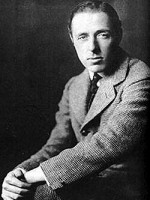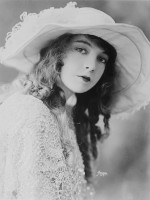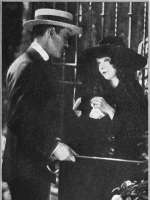Christy Cabanne is a Actor, Director, Scriptwriter, Producer, Assistant Director and Presenter American born on 15 april 1888 at St. Louis (USA)

Christy Cabanne, born William Christy Cabanne, (April 16, 1888 – October 15, 1950) was an American film director, screenwriter and silent film actor. Christy Cabanne was, along with Sam Newfield and William Beaudine, one of the most prolific directors in the history of American film.
Being a published author, he was hired by Metro Pictures to write a serial. After that he formed his own production company, but was shut down only a few years later. He then became a director for hire, mainly of low- to medium-budget films for such studios as FBO, Associated Exhibitors, Tiffany and Pathe, although he worked at MGM on a few occasions in the mid- to late 1920s on films such as The Midshipman (1925). Cabanne directed legendary child actress Shirley Temple in The Red-Haired Alibi (1932) in her first ever credited role in a feature length movie.
In the 1930s he made many films with Universal. By the 1940s he continued to direct Universal's popular B pictures, and made himself available to low-budget, independent producers. In 1947 he directed a Bela Lugosi thriller, Scared to Death, which was experimental in that it was photographed on semi-professional, economical 16mm color film. (Robert L. Lippert released it on standard 35mm film in 1947.
Source : Wikidata
Christy Cabanne

- Infos
- Photos
- Best films
- Family
- Characters
- Awards
Birth name William Christy Cabanne
Nationality USA
Birth 15 april 1888 at St. Louis (USA)
Death 15 october 1950 (at 62 years) at Philadelphia (USA)
Nationality USA
Birth 15 april 1888 at St. Louis (USA)
Death 15 october 1950 (at 62 years) at Philadelphia (USA)
Biography
Cabanne (pronounced "CAB-a-nay") graduated from the U.S. Naval Academy at Annapolis, and spent several years in the Navy, leaving the service in 1908. He decided on a career in the theater, and became a director as well as an actor. Although acting was his main profession, when he finally broke into the film industry it was chiefly as a director after appearing in over 40 short films between 1911 and 1914. He signed on with the Fine Arts Co., then was employed as an assistant to D.W. Griffith. Miriam Cooper credited him with discovering her as an extra in 1912.Being a published author, he was hired by Metro Pictures to write a serial. After that he formed his own production company, but was shut down only a few years later. He then became a director for hire, mainly of low- to medium-budget films for such studios as FBO, Associated Exhibitors, Tiffany and Pathe, although he worked at MGM on a few occasions in the mid- to late 1920s on films such as The Midshipman (1925). Cabanne directed legendary child actress Shirley Temple in The Red-Haired Alibi (1932) in her first ever credited role in a feature length movie.
In the 1930s he made many films with Universal. By the 1940s he continued to direct Universal's popular B pictures, and made himself available to low-budget, independent producers. In 1947 he directed a Bela Lugosi thriller, Scared to Death, which was experimental in that it was photographed on semi-professional, economical 16mm color film. (Robert L. Lippert released it on standard 35mm film in 1947.
Usually with
Filmography of Christy Cabanne (108 films)
Actor

Judith of Bethulia (1914)
, 1h1Directed by D. W. Griffith, Christy Cabanne
Origin USA
Genres Drama, War, Historical
Themes Films about religion, Films based on the Bible, Films about Jews and Judaism
Actors Blanche Sweet, Henry B. Walthall, Mae Marsh, Robert Harron, Lillian Gish, Mary Gish
Rating62%





The film is based on the biblical Book of Judith. During the siege of the Jewish city of Bethulia by the Assyrians, a widow named Judith (Blanche Sweet) has a plan to stop the war as her people suffer starvation and are ready to surrender.

The Mothering Heart (1913)
, 29minutesDirected by D. W. Griffith
Origin USA
Genres Drama
Actors Walter Miller, Lillian Gish, Kate Bruce, Viola Barry, Charles West, Jennie Lee
Roles Outside Club
Rating63%





The film opens by showing a young woman (Lillian Gish) in a garden. She is tender hearted, demonstrated by her appreciation of the flowers and the rescuing of a puppy. A melancholic young man (Walter Miller) woos her and she is foolishly swayed more by his pain of rejection than her love for him and eventually agrees to marry.

A Chance Deception (1913)
, 17minutesDirected by D. W. Griffith
Origin USA
Genres Drama
Actors Blanche Sweet, Charles Hill Mailes, Harry Carey, John T. Dillon, Lionel Barrymore, Dorothy Bernard
Roles Undetermined Role
Rating42%






The House of Darkness (1913)
, 17minutesDirected by D. W. Griffith
Origin USA
Genres Drama
Actors Lionel Barrymore, Claire McDowell, Charles Hill Mailes, Lillian Gish, Dorothy Bernard, William Elmer
Roles Attack Victim
Rating60%





In the introduction a woman is shown descending into insanity after having lost her baby. As she mourns, she takes a blanket from the baby's cradle and starts rocking it as if it were her deceased child. This serves as an introduction to what kind of individuals that reside at the mental institution. The doctor at the hospital is also introduced as he proposes to a nurse.

A Misunderstood Boy (1913)
, 17minutesDirected by D. W. Griffith
Origin USA
Genres Drama
Actors Lionel Barrymore, Kate Bruce, Lillian Gish, Robert Harron, Alfred Paget, Charles Hill Mailes
Roles On Street
Rating60%






Near To Earth (1913)
, 17minutesDirected by D. W. Griffith
Origin USA
Genres Drama, Romance
Actors Lionel Barrymore, Robert Harron, Gertrude Bambrick, Mae Marsh, Walter Miller, Dorothy Bernard
Roles A Businessman
Rating22%






The Sorrowful Shore (1913)
, 17minutesDirected by D. W. Griffith
Origin USA
Genres Drama
Actors Harry Carey, Christy Cabanne, Olive Carey, Robert Harron, William Courtright, Jennie Lee
Roles The Widowed Father's Son

A Timely Interception (1913)
, 17minutesDirected by D. W. Griffith
Origin USA
Genres Drama
Actors W. Chrystie Miller, Lillian Gish, Robert Harron, Lionel Barrymore, Lucille Hutton, Joseph McDermott
Rating63%






The Wanderer (1913)
, 17minutesDirected by D. W. Griffith
Origin USA
Genres Drama, Fantasy
Actors Henry B. Walthall, Lionel Barrymore, Charles Hill Mailes, Christy Cabanne, Kate Bruce, Claire McDowell
Roles The Brother
Rating51%






A Cry for Help (1912)
, 17minutesDirected by D. W. Griffith
Origin USA
Genres Drama
Actors Lionel Barrymore, Walter Miller, Lillian Gish, Harry Carey, Kate Bruce, Christy Cabanne
Roles Witness to Accident
Rating50%






For His Son (1912)
Directed by D. W. Griffith
Origin USA
Genres Drama
Actors Blanche Sweet, Charles West, Charles Hill Mailes, Dorothy Bernard, Alfred Paget, Christy Cabanne
Roles One of the Son's Friends / At Soda Fountain
Rating61%






The God Within (1912)
, 17minutesDirected by D. W. Griffith
Origin USA
Genres Drama
Actors Blanche Sweet, Henry B. Walthall, Claire McDowell, Lionel Barrymore, Charles Hill Mailes, Gertrude Bambrick
Roles On Street (as W. Christy Cabanne)
Rating56%





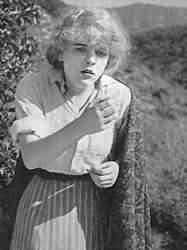 , 17minutes
, 17minutesDirected by D. W. Griffith
Origin USA
Genres Romance, Western
Actors Blanche Sweet, Charles West, Dorothy Bernard, Christy Cabanne, Charles Gorman, William A. Carroll
Roles A Villain (uncredited)
Rating60%






Heredity (1912)
, 17minutesDirected by D. W. Griffith
Origin USA
Genres Drama, Western
Actors Harry Carey, Jack Pickford, Madge Kirby, Walter P. Lewis, Kate Bruce, Lionel Barrymore
Roles Indian
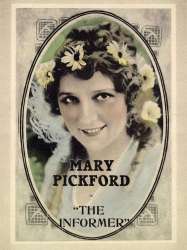
The Informer (1912)
, 18minutesDirected by D. W. Griffith
Origin USA
Genres Drama
Themes Political films
Actors Walter Miller, Mary Pickford, Henry B. Walthall, Kate Bruce, Harry Carey, Lionel Barrymore
Rating62%





 Connection
Connection
